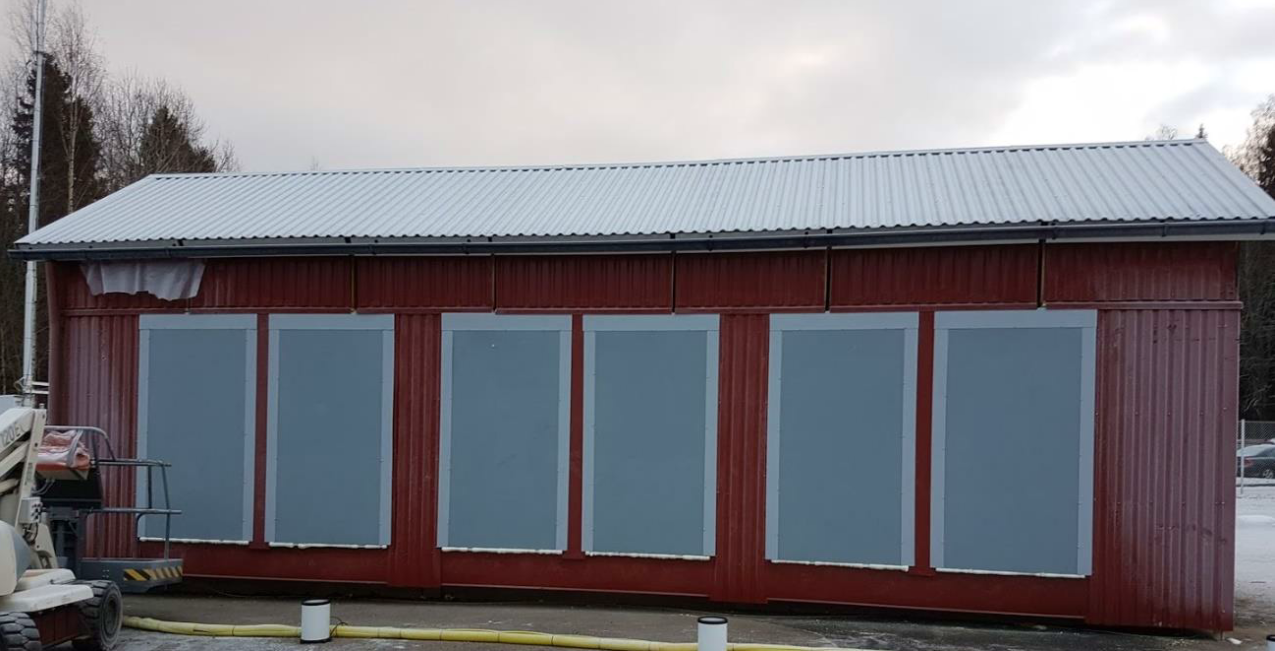The performance of different wall and roof structures in real outdoor climate conditions can be studied in the test building area. The buildings are built according to cardinal directions so that they have long north- and south-facing facades. 6 different prefabricated wall elements (1,2×2,4m2) can be placed on both facades, on both buildings. Alternatively, two openings can be combined, in which case the area of the studied wall can be as high as 2,6×2,4 m2. The maximum thickness of the wall is about 600 mm.
Both test buildings also have three replaceable roof elements. The elements are a part of the buildings’ ridged roofs and thus the studied roof elements must also be ridged to fit with the rest of the roof. The size of the elements is about 1,8x4m2, but the edges of the element reach over the studied wall elements, and so the open area of the ceiling depends on the thickness of the studied wall structures.
The buildings are equipped with mechanical ventilation, water-air heat pumps, and room-specific humidifiers. This way the pressure difference over the whole building envelope can be adjusted to be negative or positive. Temperature and humidity are controlled individually for every room, and humidity can be regulated with a moisture regain, that is adjusted based on the outdoor air humidity.

The test building areas also has a weather station, which is used to monitor the weather near the buildings. In addition to conventional sensors placed in the area, there are e.g. radiation and precipitation measuring instruments placed on the wall surfaces of the buildings.
Properties of the test buildings:
- Heating and cooling, with an accuracy of +-1 °C in conventional room air temperatures.
- Indoor humidity adjusted according to the outdoor humidity, the size of the moisture regain is adjustable according to the RIL 107-2012 moisture classes 1-3.
- The pressure difference over the building envelope can be controlled by changing the ventilation.
- Monitoring of weather conditions on a weather station near the buildings. Wind-driven rain, as well as shortwave and longwave radiation can be measured with sensors on the wall surface.
- An instrument used for measurements, that has 120 channels / room. Each room has 2 wall elements facing south, 2 wall elements facing north, and 1 roof element. One element has about 30 channels available to it for use.
- The size of a wall element is 1250×2450 mm2
- The size of a roof element is 1800×4000 mm2
What can be studied?
- The moisture performance of different structures on south- and north-facing walls can be compared.
- The effect of moisture convection caused by air leaks on the moisture performance of structures.
- Comparisons between the calculated and measured results of the studied structures.

